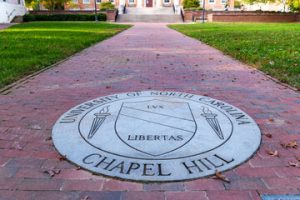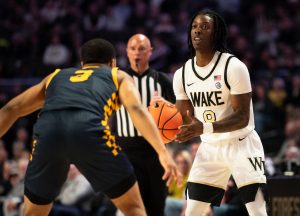Research Spotlight: Dr. Jennifer Burg
A Wake Forest computer science professor has algorithmized musical composition
Burg is using her background in computer science, as well as her experience with the humanities, to create an algorithmic understanding of music.
April 15, 2021
Dr. Jennifer Burg, a computer science professor at Wake Forest, is using algorithms to predict patterns in music, illustrating important intercepts between the arts and sciences
Listening to counterpoint music is reminiscent of overhearing a conversation. Counterpoint is a musical technique that involves the playing of two melodies over one another, each of them dependent on the other and dedicated to following the other’s pace and rhythm (similar to a good conversation). If counterpoint music is a conversation, then Burg is the linguist.
Before you can analyze a conversation, though, you must be able to understand its language. Burg uses computer programs and algorithms as her translator’s tools, which serve as perfect means for measuring counterpoint music.
“The big picture is that we are doing algorithmic composition of music,” Burg said, “and we are starting with a kind of music that is already very algorithmic, and that is the counterpoint [style] of the 15th or 16th century.”
One important part of Burg’s work is being able to quantify the artistic aspects of music. When listening to a well-composed piece of music, certain moments resonate, but can these moments be measured? Burg says yes.
Not only does Burg measure these moments in pieces of music, but she also builds algorithms that compile this information and uses them to predict (and even create) other pieces of music in the same style or genre.
“With regard to the algorithmic music composition, we’re using a kind of algorithm that’s called Hidden Markov Models,” Burg said. “It’s based on the probabilities of sequences that you would find in types of music that already exist. What’s the probability that this note would follow [another] note, or what’s the likelihood that these two notes would be played simultaneously in different voices of counterpoint?”
The research allows these patterns to be mapped and analyzed so common strings between pieces of similar music can be found.
Burg, who used to be a professor of French and English, notes that the process of analyzing music is not that different from that of literary analysis. Just as pieces of literature have patterns, techniques and charms that make them unique to a genre, music has these same characteristics as well.
“It is analytical as much as it is generative,” Burg said. “When you are totally modeling the music through the computer, part of the interest is that you are analyzing styles that already exist.”
And, like a language, after learning the grammar, syntax, and vocabulary, one can then create and communicate in that language. Burg enthusiastically explained how her studies have led her not only to understand and appreciate the art of music through the lens of computer science, but also has enabled her to create and compose music of her own.
Burg is now working on producing a musical with a professional musician and songwriter. She is using this practice as a vehicle to teach her students about sound design and as a means by which to test her research.
“It’s like most other kinds of art,” Burg said, summing up her newfound appreciation for musical composition. The more you understand [it], the more you appreciate [it].”














